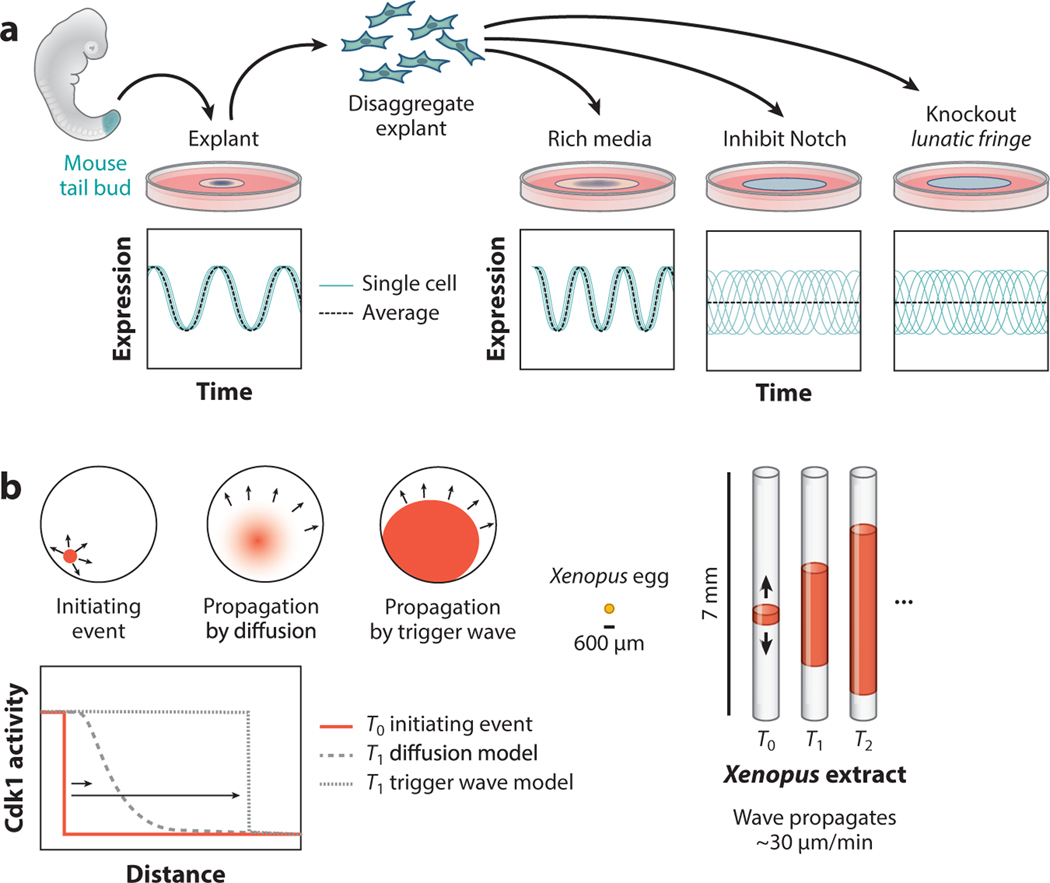Figure 5.
Mechanisms for generating temporal coordination. (a) Explant experiments using mouse tail buds demonstrated that presomitic mesoderm (PSM) cells achieve coordinated oscillations during somitogenesis by entraining locally with their neighbors via Notch signaling. When a mouse tail bud is explanted and cultured ex situ, PSM cells from the tail bud show coordinated oscillations in gene expression that reflect oscillations that occur during somitogenesis. Disaggregated tail bud cells spontaneously entrain with their neighbors if cells are disaggregated and then reaggregated, and neighbor entrainment requires Notch signaling between adjacent cells. Interfering with Notch signaling or Notch feedback (by interfering with Lunatic Fringe) prevents PSM cells from entraining with their neighbors. (b) Some signals in biology are propagated more quickly than could be achieved by diffusion of signaling molecules. Cell division in the Xenopus zygote is coordinated by a self-propagating wave of Cdk1 activity that does not slow down or change shape as it spreads from its source. The chemistry required to achieve self-propagation of Cdk1 waves can be reconstituted in tubes of zygotic extract, such that waves of activity that ordinarily travel ~300–600 μm can be made to travel 3–7 mm. Even over ~7-mm length scales, waves of Cdk1 activity were propagated at a constant rate without a decrease in amplitude, suggesting that early Xenopus cell cycles are coordinated by a Cdk1 trigger wave that travels with a uniform shape and speed to initiate cell division simultaneously throughout the zygote.

